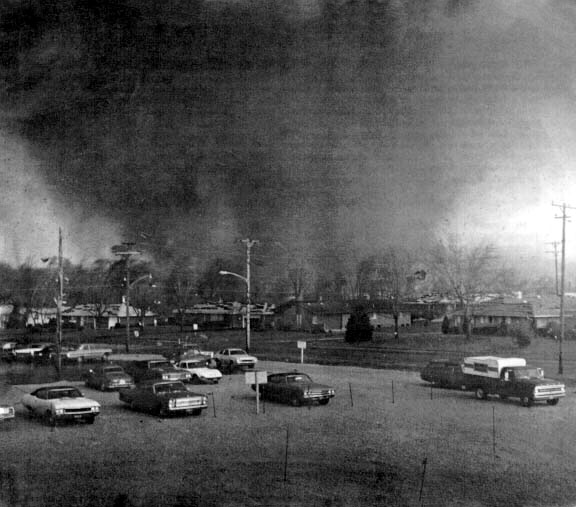 |
| The Xenia Tornado |
The forecast on April 2, 1974 called for severe thunderstorms–a problem, but not indicative of what was to come. On April 3, the outbreak began. The worst of it took place between 2 and 10 pm, but the storms continued until April 4. One hundred forty-eight tornadoes occurred in 13 states and Canada during this short period.
South Carolina, North Carolina, Virginia, West Virginia, Tennessee, New York, Illinois, Ohio, Alabama, Georgia, Mississippi, Michigan and Kentucky were affected. Six of the tornadoes were a five on the Fujita scale. More than 20 were rated four and more than 30 were rated three. Ohio, Indiana, Kentucky and Alabama were hit with the F5s.
The 1974 Tornado Outbreak carved more than 2,500 miles of destruction. One hundred eighteen tornadoes had destruction paths that measured a mile or more. Three hundred thirty people died and more than 5,000 were injured.
The year before the outbreak was also a very active year for tornadoes. There were roughly 1,100 in all. Nonetheless, no outbreak took place that year that can compare to 1974 and none have since. Though, judging by the April tornadoes of 2011, it is not out of the question. It is quite possible that a similar or worse outbreak will occur in the United States, which is the country most susceptible to tornadoes on Earth.